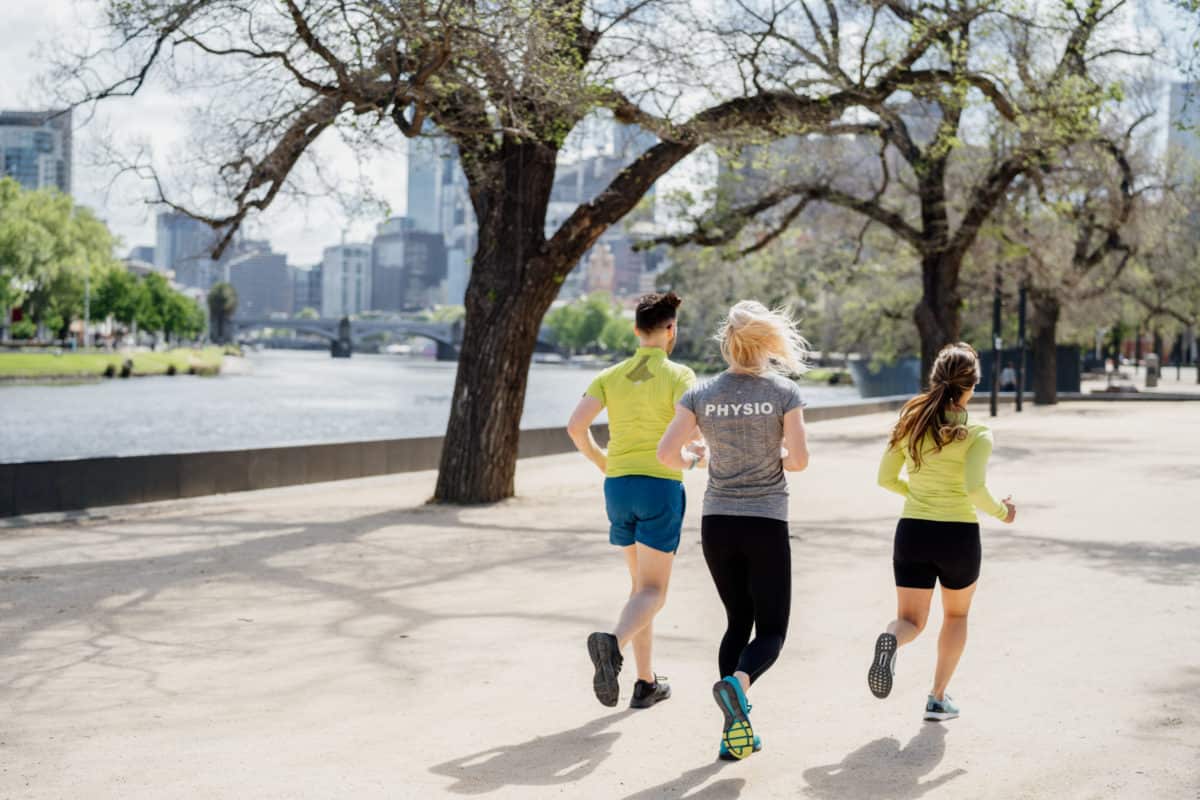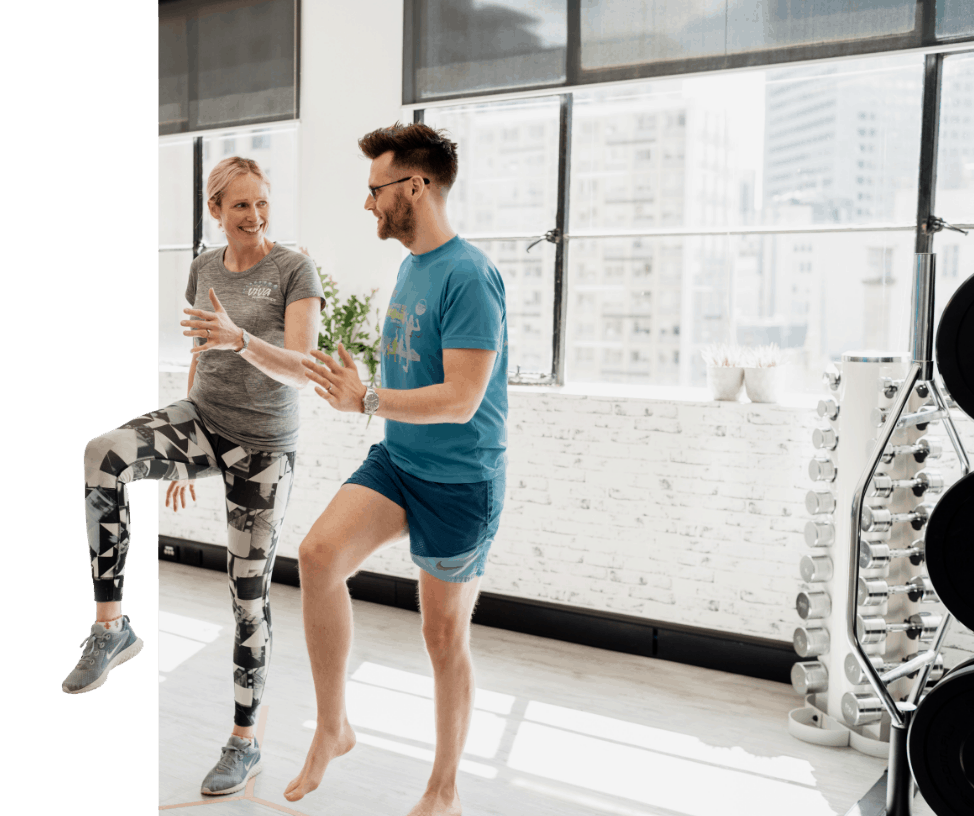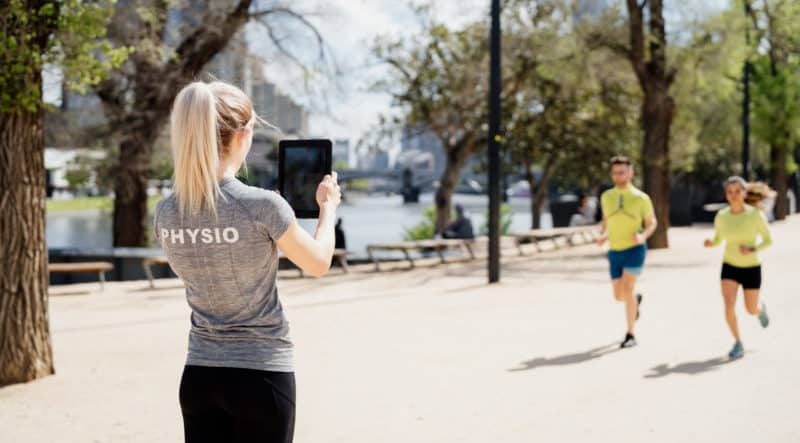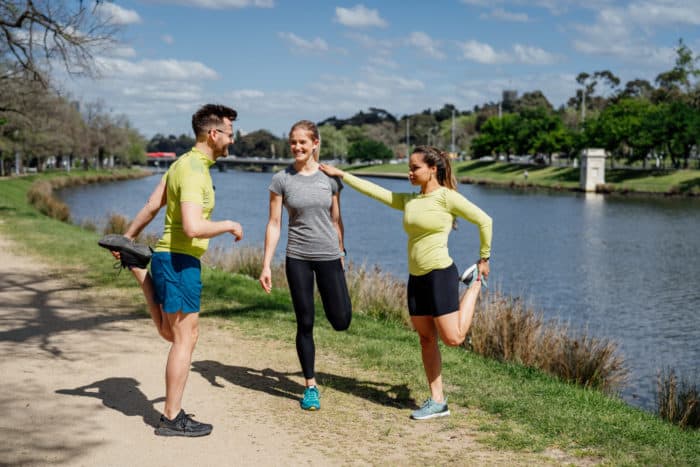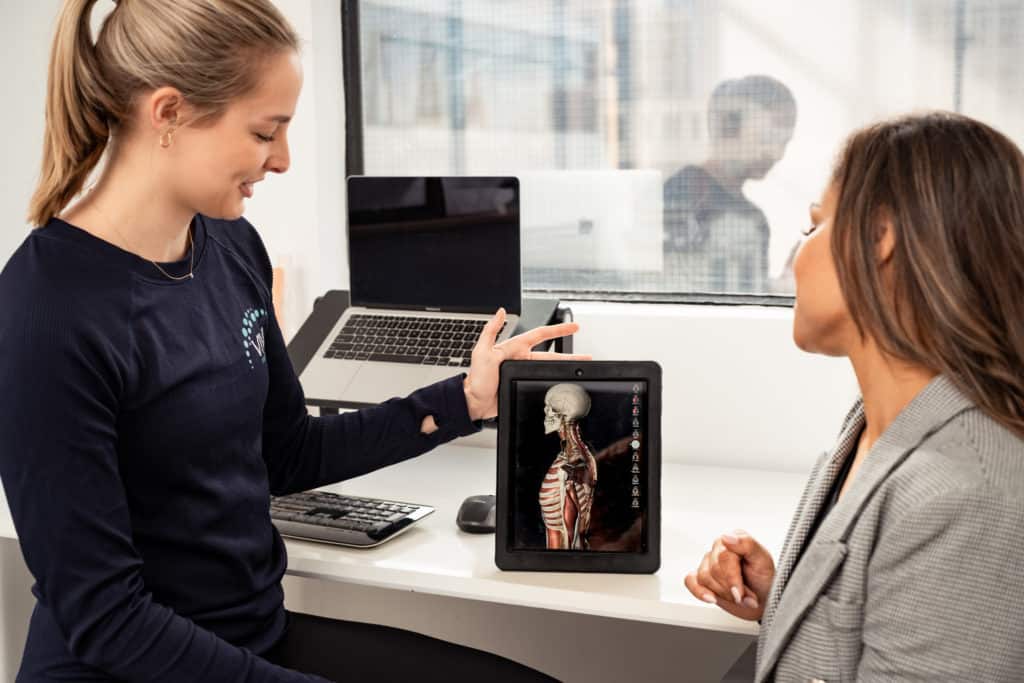Improve Your Running: Getting Started, Technique, Workouts, and More
Running is a challenge that is hard, but oh so rewarding.
It is a great way to move your body and mind – enjoyed by so many people of different ages, shapes and backgrounds.
Usually, it’s just about knowing how to get started, and how to do it safely, caring for your body – that will make your running journey enjoyable.
“You’ll never know what you’re capable of until you take that first step and just go for it!”
– Natasha Hastings (Track & Field, Olympic gold medalist).
The Benefits of Running
A strong body, weight loss, reduced stress, enhanced mood, boost immunity…all of this sounding appealing?
Well, start running.
History shows that running is one of the most effective and enjoyable forms of exercise – it’s free, no equipment required, and can be performed by people of all ages!
There is hard evidence to suggest that running has multiple positive health impacts including improved cardiovascular health, lower blood pressure, lower cholesterol, prevention of muscle and bone loss, as well as prevention of stroke, diabetes and hypertension.
Well, we better all get out there and start running, hey!! …But how do we do it well, whilst caring for our bodies…
How to Get Started Running: Advice for beginners
So you’ve read all about the benefits of running and want to know how to get started?
The beginning of your running journey can be the hardest, whilst being the most rewarding. Getting started is the hardest part.
Where, for how long and how often? If you’ve run before or do other sports or forms of training (the gym for example).
There is a lot of advice out there, some helpful, some confusing. I’ll try to break it down for you in a step-by-step guide.
The hardest part is the beginning. Running can feel hard, difficult, and exhausting, but I promise, the more consistent and persistent you are, the better you will feel and the more you will love running.
I’ve written more about the motivation for running better, it can be as simple as running to a beat, preparing your week – creating a schedule with a specific time for your run or incorporating TLC for your body, giving it the love and respect it needs to adapt to this new form of exercise.
I would suggest starting your training with a simple walk followed by a light jog.
This might look something like a 30-second jog followed by 1 minute of walking, you would then repeat this 6 times – for the total of a 10-minute workout. Over time you can extend the amount of time you jog and reduce the amount of walking time to make for a more fluid consistent run.
As physios, we often recommend starting with the Couch to 5km App (Google / Apple).
One big issue we often see with beginner runners is that they run to their cardiovascular capacity, rather than respecting that their tissues and joints need time to progressively load. Using a graded program like Couch to 5km will always earn you brownie points with your body (and your physio!) as it follows the rules of loading.
How long will it take to see the results?
It’s important to give your body time to develop and adapt to running, with consistent rest days and recovery for your body tissues. This will ensure you don’t overload your body and reduce the risk of injury.
I’d usually suggest having a couple of days rest between runs, this will give you time to re-assess how your body feels and make an educated decision if you need an extra day’s rest or you’re ready to hit the track again.
People always ask how long will it take…my answer, how long is a piece of string?
Everybody is different and every runner will take a different amount of time to reach their desired goal. In saying that, like most things, it will take time. You need to give yourself at least a month to 6 weeks of consistent running before you’ll feel the results.
Creating a specific running program, tailored to your needs, goals, and expectations can help you stay on track and ensure you look after your body at the same time.
Download: This 6-week, 5km program is what we share with intermediate runners.
Do I need a specific running training program?
There are multiple ways to train and there is no one recipe that fits all. A specific running program tailored to your needs is the way to go.
Alternatively, there are multiple apps (ahhh technology!) and programs that can assist a beginner to start running.
Download: Our team of physios at Viva created this simple running pathways guide.
However, a tailored program (link to run/training program appointment) to your individual wants and needs is by far the best approach. This will allow for factoring in your current running ability, form, health and injury history, and more. It will enable specific tailoring to your desired goal – whether that be to just begin running, improve your running, improve your speed or endurance, or train for a specific event.
Running can be simple and complex all at the same time.
It’s important to understand how to do it safely and slowly. A running assessment may help you understand your current running form, where you might run (pardon the pun!) into issues or specific exercises that may assist in improving your running technique, strength, and endurance or prevent possible injury.
Improving Your Running Technique
There’s actually a lot that goes into technique. It can be confusing and you can get fixated on the small details that may or may not give you the result you are looking for.
We can break your technique down, which can help you to start your own self-assessment and formulate a plan of action. Common terms you may hear are ‘stride’ or ‘step length or width’ – these traits can have an effect on running injuries and can result in injuries such as knee pain, achilles pain and shin pain.
Analysing your technique may help to discover an underlying weakness or movement pattern that may be reducing your running efficiency. ‘Over-striding’ is another common term and may have a significant effect not only on your running speed and efficiency but also on your risk of injury.
We can measure your stride in length but also by the number of steps you take per minute – cadence, which can give us an indication if you are over strider. These specific measures can then give you achievable goals to help improve your running efficiency and overall reduce your risk of running-related injuries.
Specific physios can perform a running assessment to gather this data and give you informed advice about your running technique.
How can a running assessment improve my running?
What might a running assessment do for you, you might ask?
Running assessments are utilised to get a snapshot view of your running form. They can give us immediate feedback as to the type of runner you are, the common injuries or challenges you may face, and where you may need some work!
Running assessments typically involve you running (funny that) – and the use of video analysis to record and then playback to review your technique. There is supporting data that gives us normative values for specifics like the joint angles, ground reaction forces, and amount of oscillation (how much you bounce around).
A specialised program is used to assess these details, and give feedback on where there is room for improvement in running drills, strength training, or program tailoring.
Assessments are a useful tool for a range of runners – for a novice to understand avoid injury, take your running to the next level improving speed and endurance or excel by improving your times and overall efficiency with running.
Workouts to Improve Your Running
So you’ve heard that strength training can improve your running?
But not sure where to start or what are the best, most efficient exercises for you?
Well, we’ve got you covered. We’ve done the research and picked out the most important exercises to get you started with your running workout.
The experts tell us that if we incorporate strength training into our weekly routine, we’ll be able to produce more power, reduce injury and boost our efficiency (Trowell et al., 2020).
Strength training as little as twice a week can assist in making these changes. Knowing what exercises, how many, and the frequency is essential to seeing the overall benefits.
Improving our leg muscles helps to improve our power, whilst strengthening connective tissues (tendons and ligaments) can assist in reducing injury and improve your overall runners ‘spring’. Try this series of exercises for calf muscle strength training to get an idea of what that might look like.
Upper body strength training can assist in improving your efficiency – your arm drive can contribute to improving power with your stride. In conjunction, strength in the core will allow you to maintain a stable upper body, resulting in a compact upper body swing and the ability to hold strong as you fatigue.
You can jump into the Viva Hub for our full and dedicated page to runners including free, shorter videos for warm-ups, cooldowns, and theory and then full-length Runner’s Strength classes which can be accessed through our on-demand subscription for less than $10 per week.
Improve Your Running Speed
Wouldn’t we all like to run that little bit faster?
Whether you’ve just started out or have been running consistently for a while, there’s that inner voice telling us to go faster…but how?
Tailoring your running program can assist in improving your running speed.
Utilising a high-intensity interval training (HIIT) session is a great way to improve your running performance. It consists of short bursts of intense effort followed by lower intensity recovery periods. It has been shown to improve VO2 Max (how efficiently your body uses oxygen) and increase muscle size, strength, and power, therefore overall endurance.
Running speed can also be relatable to running technique and muscular strength. If you can take a holistic view of your overall running journey you will find multiple ways to improve your speed and knock seconds off your time!
Improve Your Running Endurance
Building running endurance takes time and patience.
Understanding how to tailor your running program to improve your endurance will give you the best opportunity to perform it safely and injury-free.
You’ve probably heard the term train smarter not harder. Well, this rings true when trying to improve your running endurance.
It is important to work gradually to increase your endurance at a rate where your body’s tissues can tolerate what you are asking them to do. This means listening to your body’s needs – the aches, pain, fatigue, and warning signs.
Allowing adequate recovery and time for your muscles to adapt.
Setting up your weekly running schedule can help to assist you in making sure you take care of your body, whilst getting the most out of your running week. A typical running week would incorporate a long run, a tempo run, an interval session, some strength training, and adequate recovery.
How to improve your recovery from running?
It’s a good idea to listen to your body and it is recommended that we schedule some recovery time from running.
Recovery can be completed in various forms and may feel and look different for each individual runner. Usually runner’s take an “off legs” approach to their recovery day – fitting in a swim or bike ride to free up the leg muscles.
Research from the Sports Dieticians Australia has shown hydration and correct fueling (choosing healthy food) can impact how our muscles recover and optimise recovery time to get you back out there as soon as possible (Papadopoulou S. K., 2020).
Deep tissue massage, mobilisation, and dry needling are forms of recovery that may assist in flushing out your muscles pre or post-run or event (link to deep tissue & SDN appointment). These techniques are used to target specific trigger points or sore spots in your muscles, with the aim to release and stimulate blood flow, allowing quicker recovery and therefore optimising their use for your next run.
An easy way to jump straight into recovering is through self-care techniques – such as foam roller or trigger point ball release. These tools are useful in optimising your muscle recovery and providing relief from tight, stiff, or sore muscles after running.
Common Running Injuries and What to Expect
There are a number of injuries that are closely linked with running. However, if addressed early and by the right person you can prevent these injuries from occurring or becoming an issue.
Most commonly seen is knee pain in runners. The most common diagnosis is that of patellofemoral joint pain. This presents as pain around the front of your knee cap, worse as you continue running, usually noticeable climbing up/down stairs or when squatting or lunging.
A close second – achilles tendinopathy, presents as pain toward the back of your ankle – usually worse in the morning and improves with activity. Follow this link to access more information on what Achilles tendinopathy is and how to improve your pain.
Shin splints or medial tibial stress syndrome (MTSS) as it’s known in the physio world, are commonly present after a recent return or beginning to running. The pain presents in your shins, it can be sharp or dull and is usually worse with increased activity.
They need nurturing and a specific plan to repair and rebuild into a consistent running plan. Getting tailored advice around your running program, technique, strengthening and specific recovery will assist in reducing your chances of sustaining a running injury (Kakouris N et al., 2021).
Running – I love that it keeps us young. It is inclusive, empowering, and energising. If you haven’t started your running journey yet – now is the time! Get a support team around you and off your trot!
You can read further about how we help you to run well at Viva.
Or, ready to give it a go and need some motivation? You can put your headphones in dial-in on a Friday morning for our Outdoor Running Group where our physios will take you through a 45-minute session of intervals, speed, and endurance.
If you live in Melbourne and would like one of our physios to give you expert advice and ideas to enhance your technique, I recommend you book a running assessment.
References:
1. Trowell D, Vicenzino B, Saunders N, Fox A, Bonacci J. Effect of Strength Training on Biomechanical and Neuromuscular Variables in Distance Runners: A Systematic Review and Meta-Analysis. Sports Med. 2020 Jan;50(1):133-150. doi: 10.1007/s40279-019-01184-9. PMID: 31541409.
2. Papadopoulou SK. Rehabilitation Nutrition for Injury Recovery of Athletes: The Role of Macronutrient Intake. Nutrients. 2020;12(8):2449. Published 2020 Aug 14. doi:10.3390/nu12082449
3. Kakouris N, Yener N, Fong DTP. A systematic review of running-related musculoskeletal injuries in runners. J Sport Health Sci. 2021 Sep;10(5):513-522. doi: 10.1016/j.jshs.2021.04.001. Epub 2021 Apr 20. PMID: 33862272; PMCID: PMC8500811.
4. Oja P, Titze S, Kokko S, Kujala UM, Heinonen A, Kelly P, Koski P, Foster C. Health benefits of different sport disciplines for adults: systematic review of observational and intervention studies with meta-analysis. Br J Sports Med. 2015 Apr;49(7):434-40. doi: 10.1136/bjsports-2014-093885. Epub 2015 Jan 7. PMID: 25568330.
